Table of Contents[Hide][Show]
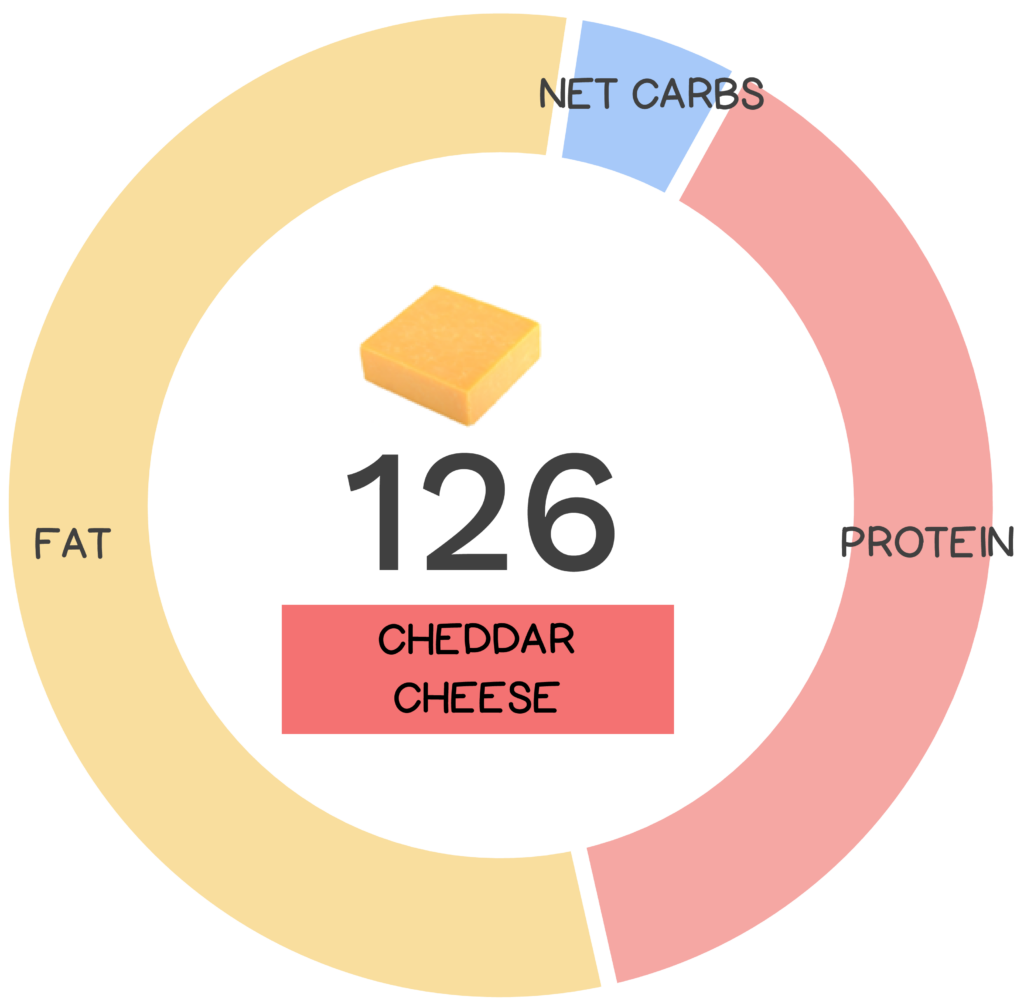
Cheese is definitely a staple of the American diet. In fact, on average Americans consume over 40 pounds of cheese per year! While this dairy product hasn’t always had the best reputation as far as healthy foods go, this is in large part based on how it is consumed. Americans put cheese on everything, but it is synonymous with cheese burgers, grilled cheese sandwiches, macaroni and cheese, nachos and above all – pizza. While these may not be the most healthful combinations, independently cheese can provide a lot of “grate” nutrition!
It is assumed that cheese was an accidental discovery resulting from storing milk in a container made from an animal stomach, causing it to turn into curds and whey.
Cheese is a dairy product typically produced from the milk of cows, goats, or sheep, but can be made from the milk of other mammals including buffalo, camel, llama, reindeer, and yak! It has been a part of the human diet since before recorded history (potentially as early as 8000 BCE), with some of the world’s oldest preserved cheeses discovered in Egypt and China from 3200-3600 years ago – talk about well-aged! Although it isn’t known exactly when or where this food originated, it is assumed that cheese was an accidental discovery resulting from storing milk in a container made from an animal stomach, causing it to turn into curds and whey. A fitting hypothesis given how cheese is produced.
Essentially cheese forms from curdling of the milk protein casein. Cheese production begins with the separation of milk into solids (curds) and liquids (whey), which occurs through the acidification of milk via the addition of an acid such as vinegar or more commonly with the introduction of a starter bacteria, which converts the sugar in milk (lactose) into lactic acid. Traditionally this step is followed by the addition of rennet, which is a group of enzymes (primarily chymosin) found in the stomachs of ruminant mammals such as cattle, sheep, and goats (thus explaining the accidental discovery of this ancient food!). Today, however, most cheese is made with chymosin prepared from bacteria – its function being to curdle the casein in milk. After the curds and whey have been separated (and before Little Miss Muffet arrives) the curds may be further processed. For some cheeses the curds are cut into smaller pieces to expel liquid – the extent depends on the type of cheese being produced (harder cheeses are drier), while others are heated, stretched, or washed before salting for flavor and preservation. Finally, the cheese is shaped and aged under controlled temperature and humidity anywhere from a few days to several years! World-wide there are over 1,000 types of cheese each with its own unique flavor, texture, aroma, and appearance, resulting from a multitude of factors including the type of milk used, pasteurization, fat content, processing, flavoring additives, country of origin, and aging to name a few. Surprised there are so many different types of cheese? You “cheddar” believe it!
Cheddar cheese is differentiated during production by a process known as ‘cheddaring’ – repeatedly stacking and turning slabs of curd in order to squeeze out whey.
Cheddar cheese is the world’s most popular cheese, originating from the English village of Cheddar, where Cheddar Gorge contains a number of caves providing the ideal humidity and temperature for maturing cheese. It is a hard cheese, made from cow’s milk, that is differentiated during production by a process known as ‘cheddaring’. This process involves repeatedly stacking and turning slabs of curd in order to squeeze out whey. This ‘cheddaring’ continues until most of the moisture is removed, resulting in a layered, dense, drier cheese.
As it ages the taste of cheddar becomes more pronounced. Typically, mild cheddar is aged for 2 to 3 months, while mature (or sharp) cheddar is aged 12 to 18 months, and extra-sharp cheddars are aged for longer, even as long as 10 years! Naturally cheddar cheese is white to pale yellow, though it is synonymous with the color orange, which is a result of the addition of annatto – a plant extract from the seeds of the achiote tree (aka lipstick plant).
Naturally cheddar cheese is white to pale yellow, though it is synonymous with the color orange, which is a result of the addition of annatto.
Manufacture of cheddar cheese easily adapted to large-scale production which is why it one of the least expensive cheeses, giving way to its use in popular dishes such as cheeseburgers, grilled cheese sandwiches, macaroni and cheese, and nachos, and why, on average, Americans devour 10 pounds of this cheese each year. No whey!
Nutrivore Score for Cheddar Cheese – 126
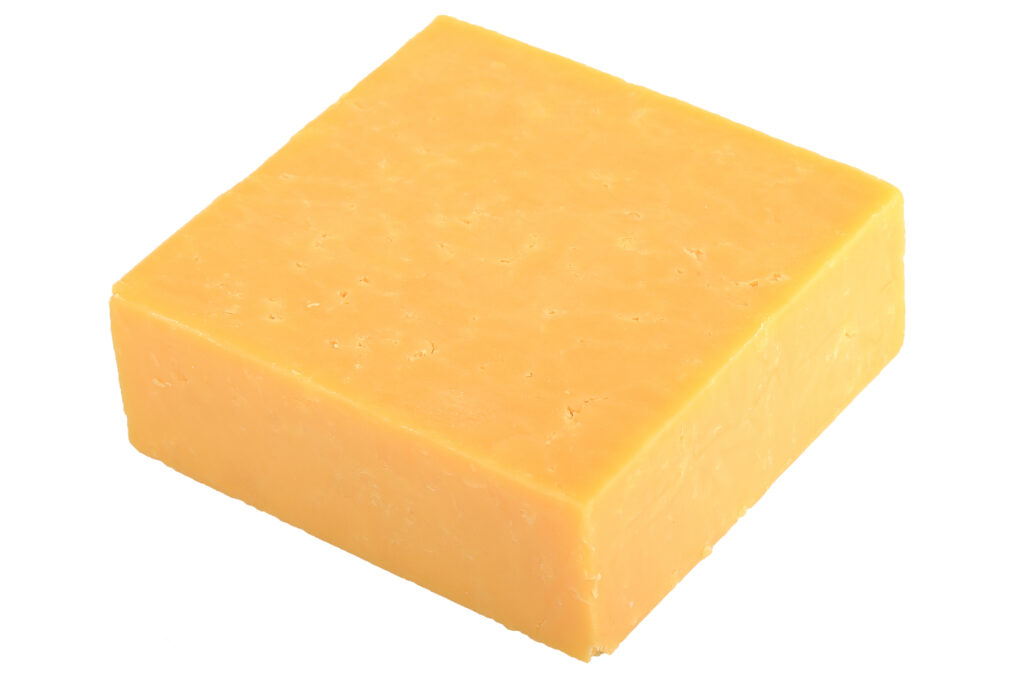
Cheddar cheese has a Nutrivore Score of 126, making it a low nutrient-dense food! Plus, it is a low-carb food; cheddar cheese has 1.4 grams of net carbs per 1.5 ounce serving!
Per serving, cheddar cheese is an excellent source (20-50% daily value) of calcium, monounsaturated fatty acids (MUFA), and selenium; and a good source (10-20% daily value) of conjugated linoleic acid (CLA), medium chain triglycerides (MCTs), phosphorus, protein, sodium, vitamin A, vitamin B2 (riboflavin), vitamin B12 (cobalamin), and zinc.
Ditch Diets. Embrace Nutrients. Start with this FREE Guide.
Sign up for the free Nutrivore Newsletter, your weekly, science-backed guide to improving health through nutrient-rich foods — without dieting harder —and get the Beginner’s Guide to Nutrivore delivered straight to your inbox!

Cheddar Cheese Nutrition Facts
One serving of cheddar cheese is standardized to 1.5 ounces or about 42 grams. A typical slice of cheddar cheese weighs 28 grams which means: one serving of cheddar cheese is equivalent to 1 1/2 slices of cheddar cheese. For reference, 1 cup of shredded cheddar cheese weighs 113 grams and 1 cup of diced cheddar cheese weighs 132 grams which means: one serving of cheddar cheese is roughly equivalent to a little more than 1/3 cup of shredded cheddar cheese or slightly less than 1/3 cup diced cheddar cheese.
Cheddar Cheese Nutrition Facts Per Serving
| Cheddar Cheese | Nutrivore Score: 126 | Nutrient Density: Low |
|---|---|---|
| Serving Size: 1.5 ounces (42 grams) | Protein: 9.6 grams | Net Carbohydrates: 1.4 grams |
| Calories: 169 | Total Fat: 14.0 grams | Dietary Fiber: 0.0 grams |
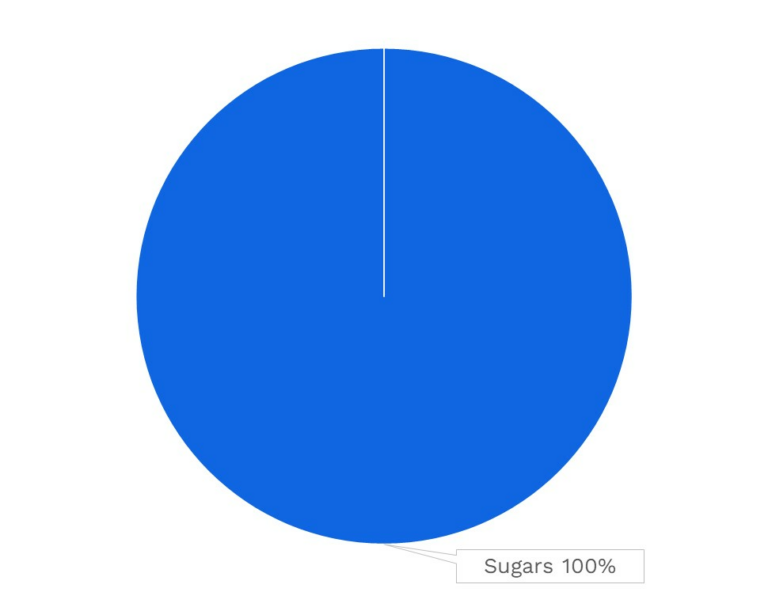

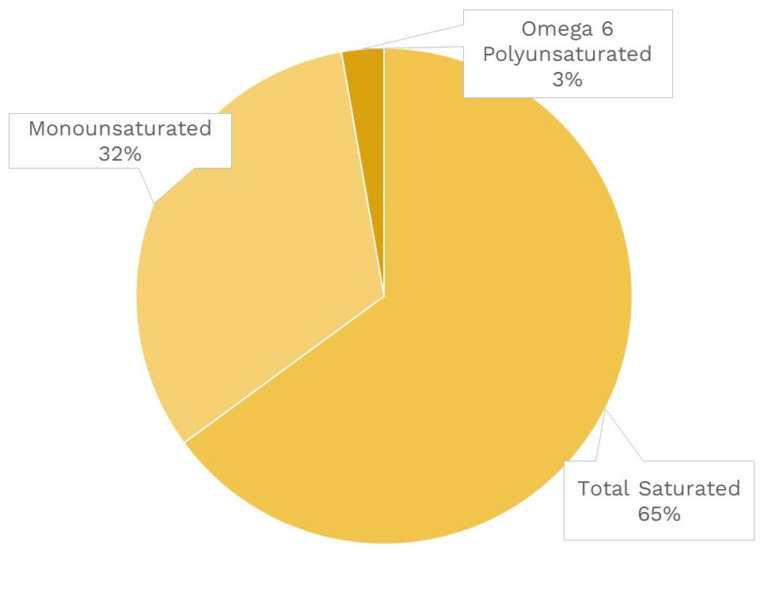
| VITAMINS | ||
|---|---|---|
| Vitamin A | 141.5 μg RAE | 16% DV |
| Vitamin B1 (Thiamin) | 12.2 μg | 1% DV |
| Vitamin B2 (Riboflavin) | 179.8 μg | 14% DV |
| Vitamin B3 (Niacin) | 0.0 mg | 0% DV |
| Vitamin B5 (Pantothenic Acid) | 0.2 mg | 3% DV |
| Vitamin B6 (Pyridoxine) | 27.7 μg | 2% DV |
| Vitamin B7 (Biotin) | 1.5 μg | 5% DV |
| Vitamin B9 (Folate) | 11.3 μg | 3% DV |
| Vitamin B12 (Cobalamin) | 0.5 μg | 19% DV |
| Vitamin C | 0.0 mg | 0% DV |
| Vitamin D (D2 + D3) | 0.3 μg | 1% DV |
| Vitamin E | 0.3 mg | 2% DV |
| Vitamin K | 1.0 μg | 1% DV |
| Choline | 6.9 mg | 1% DV |
| Myo-Inositol | 3.8 mg | ~ |
| CoQ10 | 0.1 mg | ~ |
| FUNCTIONAL FATS | ||
|---|---|---|
| MUFA | 3.9 g | 20% DV |
| ALA | 47.9 mg | 3% DV |
| EPA + DHA | 4.6 mg | 2% DV |
| CLA | 93.7 mg | ~ |
| Linoleic Acid | 0.5 g | 3% DV |
| MCT’s | 1.1 g | ~ |
| MINERALS | ||
|---|---|---|
| Calcium | 298.2 mg | 23% DV |
| Copper | 12.6 μg | 1% DV |
| Iodine | ~ | ~ |
| Iron | 0.1 mg | 0% DV |
| Magnesium | 11.3 mg | 3% DV |
| Manganese | 11.3 μg | 0% DV |
| Phosphorus | 191.1 mg | 15% DV |
| Potassium | 31.9 mg | 1% DV |
| Selenium | 12.0 μg | 22% DV |
| Sodium | 274.3 mg | 12% DV |
| Zinc | 1.5 mg | 14% DV |
| PHYTONUTRIENTS | ||
|---|---|---|
| Carotenoids | 35.7 μg | ~ |
| Polyphenols | 0.0 mg | ~ |
| Phytosterols | 0.0 mg | ~ |
| Glucosinolates | ~ | ~ |
| Thiosulfinates | ~ | ~ |
| Betalains | ~ | ~ |
| AMINO ACIDS & PEPTIDES | ||
|---|---|---|
| Taurine | ~ | ~ |
| Ergothioneine | ~ | ~ |
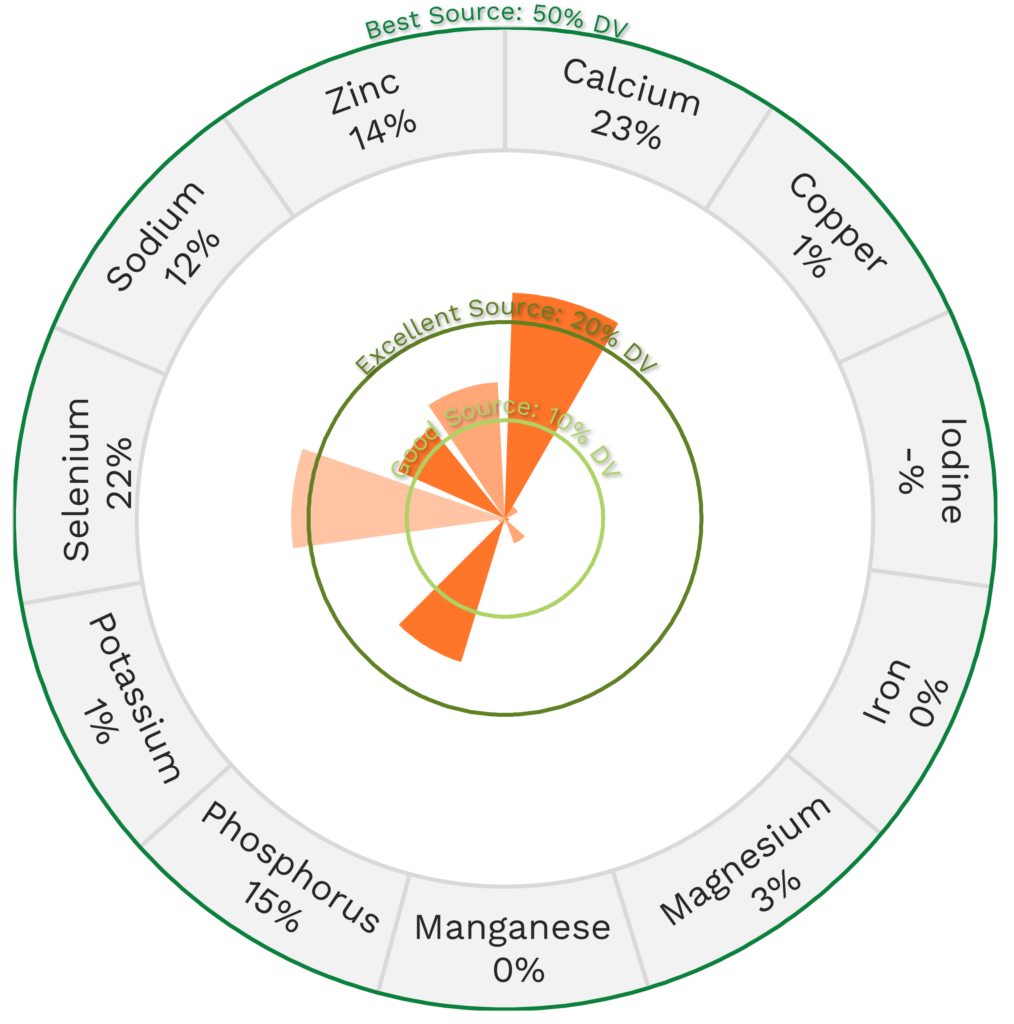
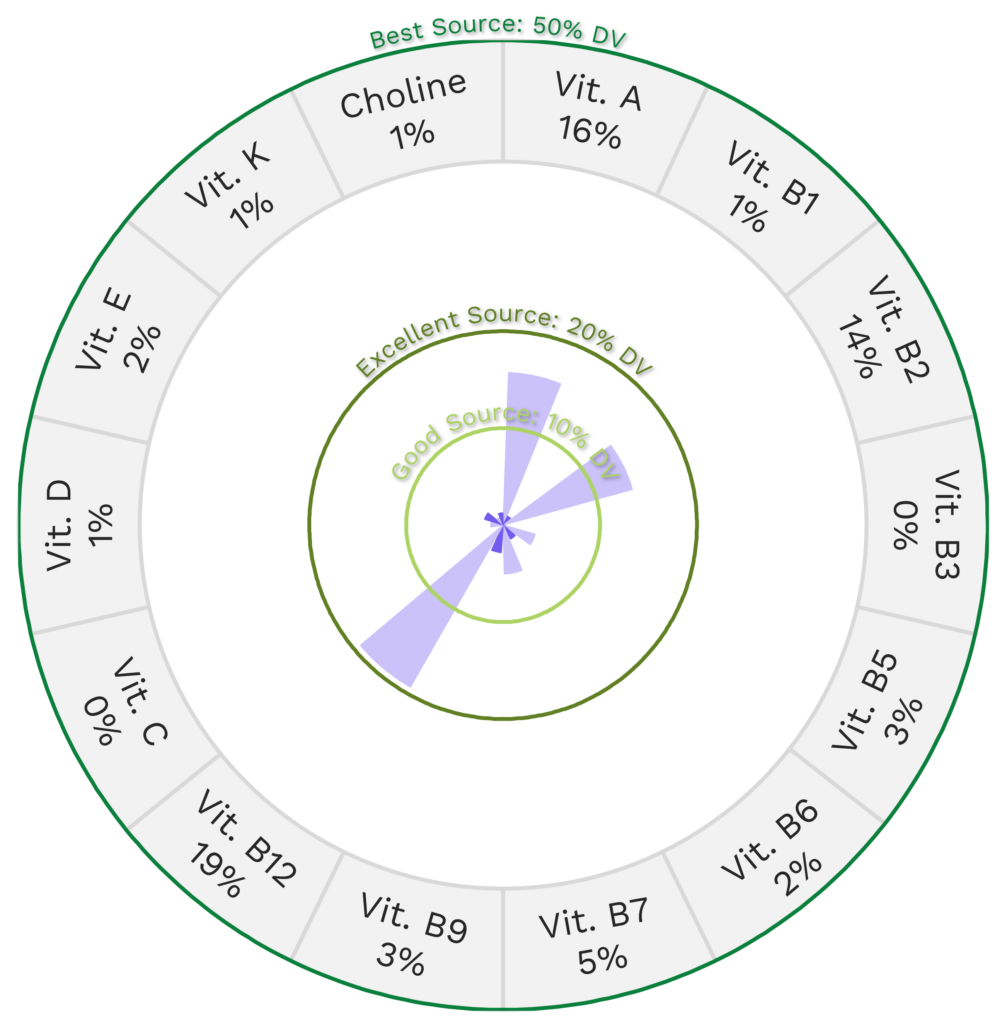
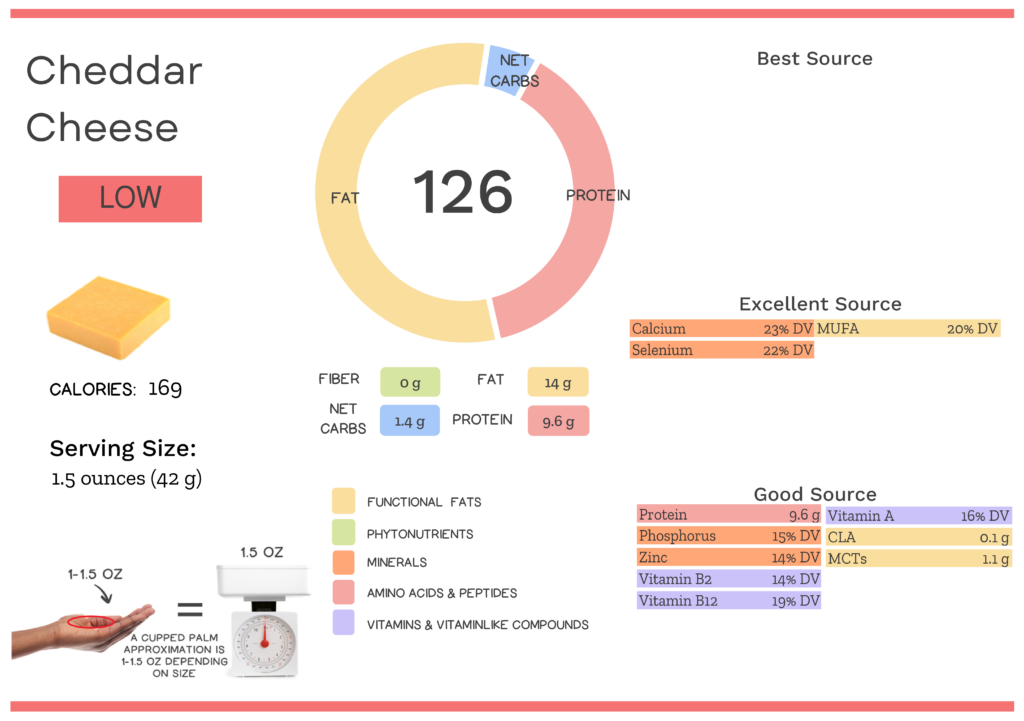
Cheddar Cheese Nutrition Varies With Aging
Cheddar cheese can be aged for various lengths of time, which impacts its flavor, texture, and nutrient profile. Mild cheddars are generally aged between 2 and 3 months, sharp cheddars between 12 and 18 months, and extra-sharp cheddars are aged even longer. The ‘older’ the cheese, the stronger the flavor (aka sharpness), which is due to levels of bitter peptides in the cheese!
| NUTRIVORE SCORE | |
|---|---|
| Cheddar cheese | 126 |
| Cheddar cheese, sharp, sliced | 121 |
Cheese Nutrition Varies With Type
There are over 1,000 types of cheese, each with its own unique flavor and nutrient profile, which means their Nutrivore Scores vary too! In general, dairy products, especially cheeses, have the lowest nutrient density among animal foods while also having the highest caloric density. The table below provides a sampling (a cheese board if you will) of Nutrivore Scores for differing types of cheese, all of which are similar in nutrient density.
| NUTRIVORE SCORE | |
|---|---|
| Blue cheese | 130 |
| Brie cheese | 130 |
| Cheddar cheese | 126 |
| Cottage cheese, low-fat, 2% | 201 |
| Cream cheese | 78 |
| Feta cheese | 189 |
| Goat cheese, soft | 149 |
| Gouda cheese | 136 |
| Mozzarella cheese, whole milk | 145 |
| Parmesan cheese, hard | 138 |
| Swiss cheese | 157 |
Impressed by all the “grate” nutrition in cheddar cheese? Maybe your friends will be too!
Health Benefits of Cheddar Cheese Nutrients
Let’s take a closer look at all of the best and excellent source of nutrients found in a 1.5-ounce serving of cheddar cheese and see how they benefit our health.
Cheddar Cheese Provides 23% DV Calcium
Cheddar cheese is an excellent source of calcium, providing 23% of the daily value per 1.5-ounce serving!
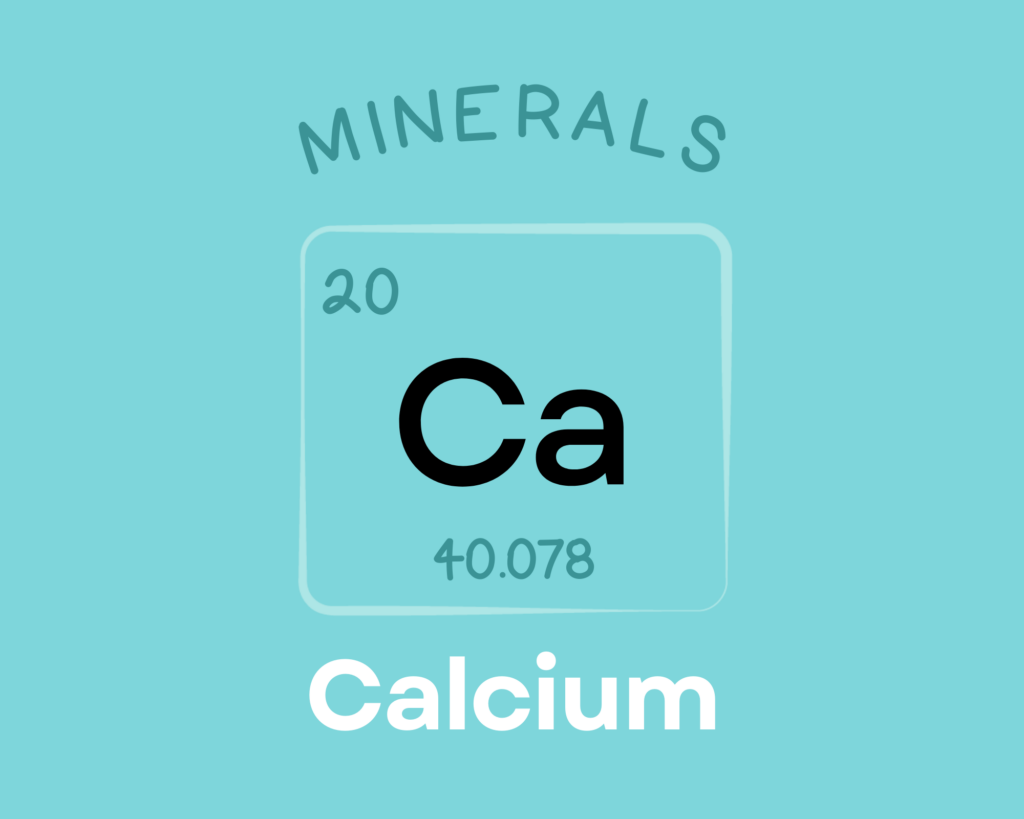
Calcium is a major structural component of bones and teeth, and also serves as an electrolyte—a type of electricity-conducting mineral needed for regulating nerve impulses, muscle contraction (including the heartbeat), blood pH, and fluid balance. Getting enough calcium helps protect against osteoporosis and bone fractures, while also potentially reducing the risk of colorectal cancer, pregnancy-related high blood pressure, and kidney stones. It may even help improve PMS symptoms and assist in body weight regulation! Learn more about calcium here.
Cheddar Cheese Provides 22% DV Selenium
Cheddar cheese is also an excellent source of selenium, providing 22% of the daily value per 1.5-ounce serving!
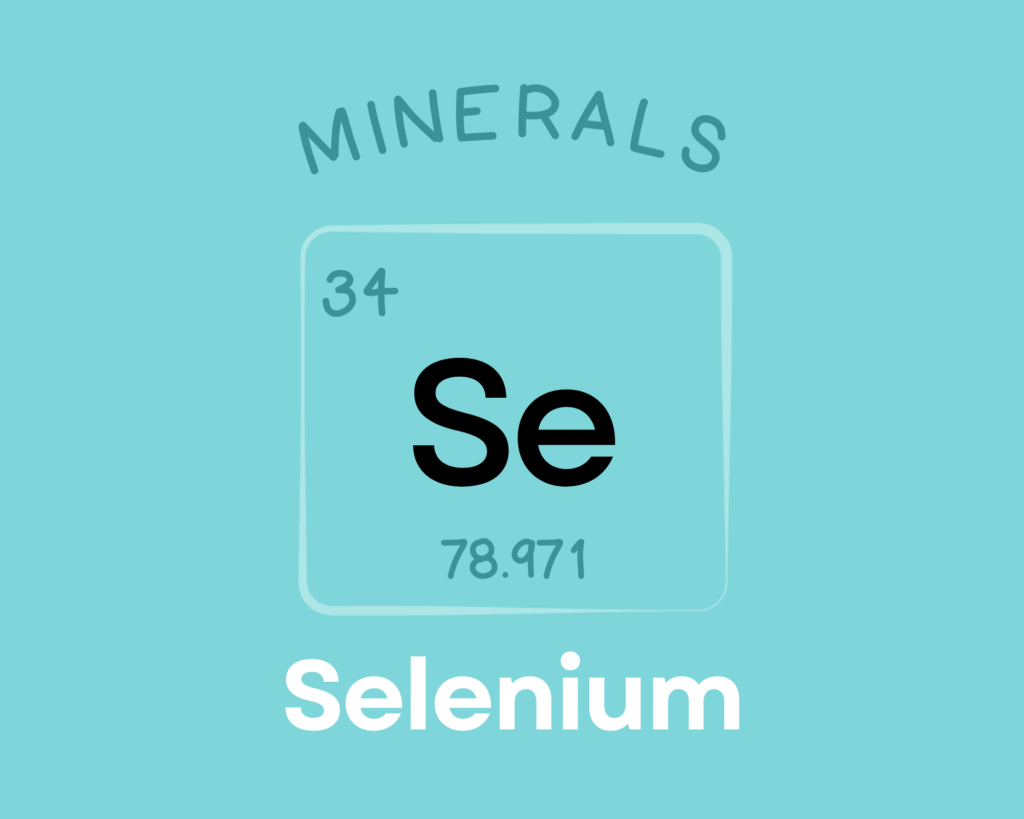
Selenium is a trace mineral needed by all mammals to sustain life. It serves as a component of the non-proteinogenic amino acids selenocysteine and selenomethionine, and also helps form over two dozen selenoproteins involved in reproduction, thyroid hormone metabolism, antioxidant defense, DNA synthesis, and immunity. Observational research suggests selenium could play a protective role against cancer, heart disease, asthma, and inflammatory bowel disease, although human trials have generally been lacking or contradictory. There’s also evidence that selenium can play a preventative role in asthma and inflammatory bowel disease, while also reducing mortality in patients with sepsis. Learn more about selenium here.
Cheddar Cheese Provides 20% DV Monounsaturated Fatty Acids (MUFA)
Cheddar cheese is an excellent source of monounsaturated fatty acids, providing 20% of the daily value per 1.5-ounce serving!
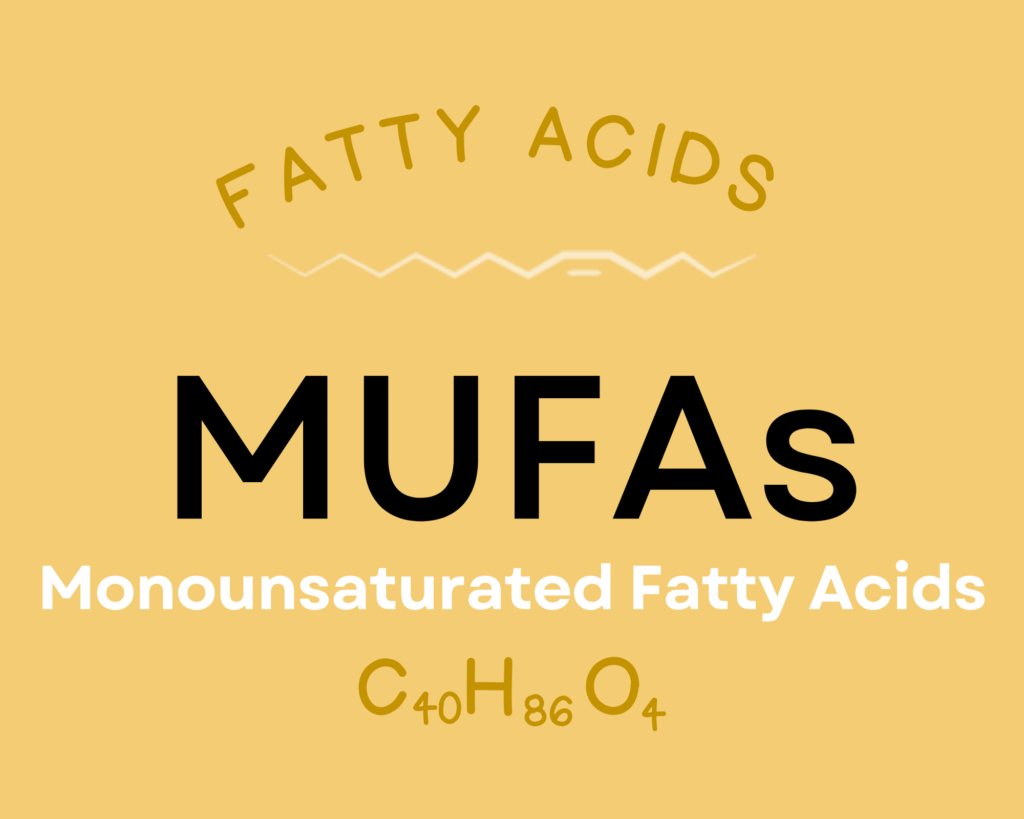
Monounsaturated fatty acids (MUFA), the most abundant of which is oleic acid, play an important role in cellular function due to its presence in phospholipids in cell membranes. Oleic acid is beneficial for cardiovascular health—both in reducing risk factors like high blood pressure, cholesterol, triglycerides, inflammation, and oxidative stress, and in reducing actual cardiovascular disease incidence and events. Oleic acid has even demonstrated anti-cancer activity, with an ability to inhibit the progression, proliferation, and metastasis of several types of cancer cells. Research shows this fat could benefit body weight regulation and obesity through its effects on energy metabolism and lipogenesis. In fact, human trials show that enriching diets with oleic acid leads to decreases in central obesity, abdominal fat, body weight, and food intake, while also possibly increasing energy expenditure! Oleic acid also possesses some benefits for diabetics—influencing genes and pathways involved in insulin signaling and glucose metabolism, as well as helping protect against some complications of diabetes, like diabetic retinopathy and atherosclerosis. Learn more about oleic acid here.
Want to know the top 500 most nutrient-dense foods?
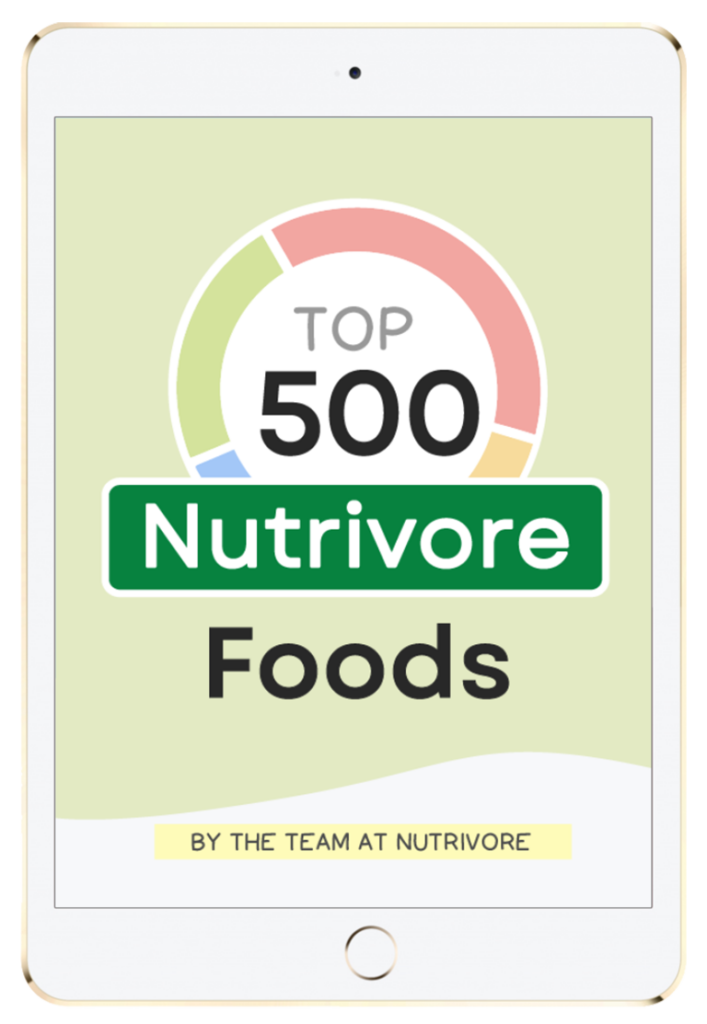
Top 500 Nutrivore Foods
The Top 500 Nutrivore Foods e-book is an amazing reference deck of the top 500 most nutrient-dense foods according to their Nutrivore Score. Think of it as the go-to resource for a super-nerd, to learn more and better understand which foods stand out, and why!
If you are looking for a quick-reference guide to help enhance your diet with nutrients, and dive into the details of your favorite foods, this book is your one-stop-shop!
Buy now for instant digital access.
How Much Cheddar Cheese Should We Eat Per Day?
While dairy products may not be the most nutrient-dense foods, they are a “grate” source of calcium in addition to containing a range of other nutrients, all the while being a complete protein – “whey” better than you thought, huh?
Studies show a good target for most people is two servings of dairy products daily, with the most benefits coming from fermented versions like yogurt or kefir.
A 2021 meta-analysis of 55 prospective cohort studies found that dairy consumption in general was associated with a 10% lower risk of stroke, a 4% lower risk of coronary heart disease, and a 9% reduced risk of hypertension (high blood pressure). A 2016 meta-analysis of 29 cohort studies showed that cheese reduced cardiovascular disease risk, and fermented dairy reduced total mortality risk, albeit by a very modest amount (2% per 20 gram serving of fermented dairy or 10 gram serving of cheese). Importantly, a 2017 meta-analysis revealed a U-shaped dose response curve for dairy products, with intake up to about 400 grams daily modestly reducing all-cause mortality (again, only about a 2% effect), but higher consumption levels no longer being beneficial—intake greater than 1000 grams per day was associated with a 15% increased risk of total mortality.
A serving of milk or yogurt is 1 cup (8 ounces, or 250mL) and a serving of cheese is 1.5 ounces (about 42 grams). Learn more about dairy products here.
Easily track your servings of Nutrivore Foundational Foods!

The Nutrivore Weekly Serving Matrix
The Nutrivore Weekly Serving Matrix digital resource is an easy-to-use and flexible weekly checklist designed to help you maximize nutrient-density and meet serving suggestions of Nutrivore foundational foods, all without having to weigh or measure your foods!
Includes a 22-page instructional guide and downloadable interactive guides.
Buy now for instant digital access.
cITATIONS
Expand to see all scientific references for this article.
Clements RS Jr, Darnell B. Myo-inositol content of common foods: development of a high-myo-inositol diet. Am J Clin Nutr. 1980 Sep;33(9):1954-67. doi: 10.1093/ajcn/33.9.1954. PMID: 7416064.
Mushtaq S, Heather Mangiapane E, Hunter KA. Estimation of cis-9, trans-11 conjugated linoleic acid content in UK foods and assessment of dietary intake in a cohort of healthy adults. Br J Nutr. 2010 May;103(9):1366-74. doi: 10.1017/S000711450999328X. Epub 2009 Dec 8. PMID: 19968893.
Pravst I, Zmitek K, Zmitek J. Coenzyme Q10 contents in foods and fortification strategies. Crit Rev Food Sci Nutr. 2010 Apr;50(4):269-80. doi: 10.1080/10408390902773037. PMID: 20301015.
USDA Food Central Database: Cheese, cheddar (includes foods for USDA’s Food Distribution Program)
Watanabe T, Kioka M, Fukushima A, Morimoto M, Sawamura H. Biotin content table of select foods and biotin intake in Japanese. Int J Anal Bio-Sci. 2014. Vol 2(4):109-125.


